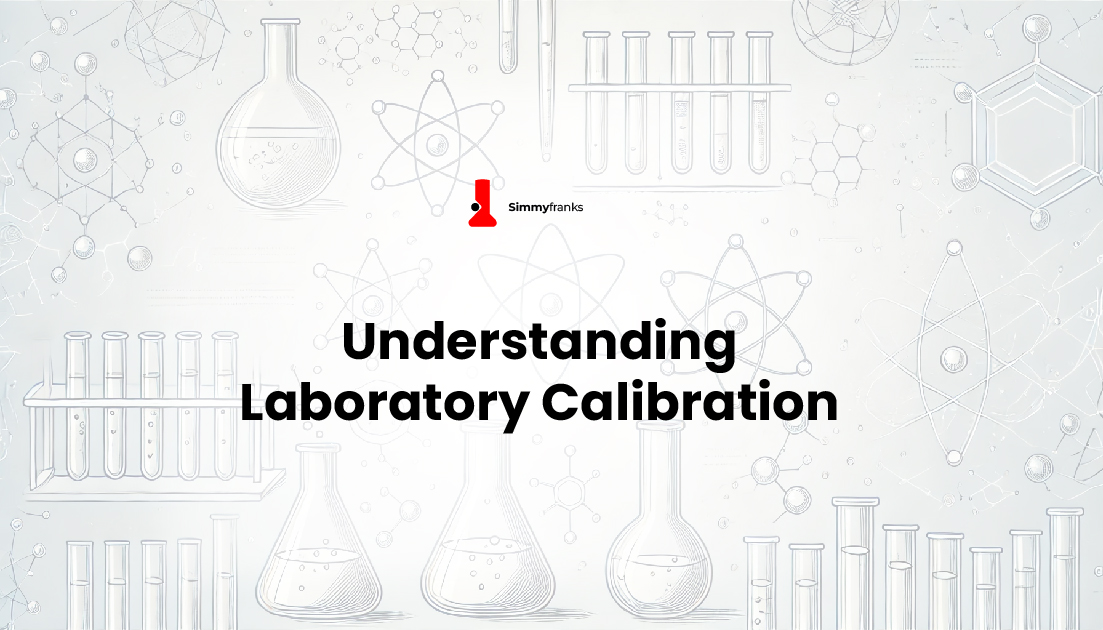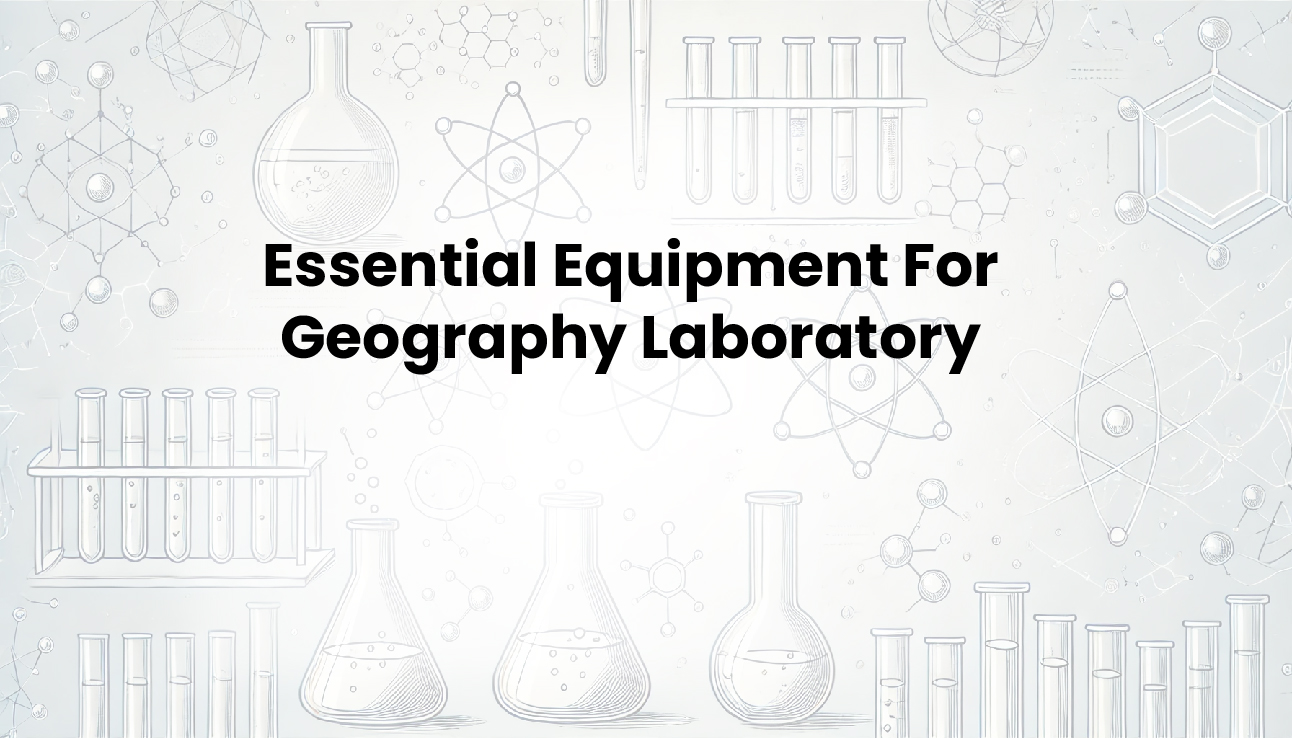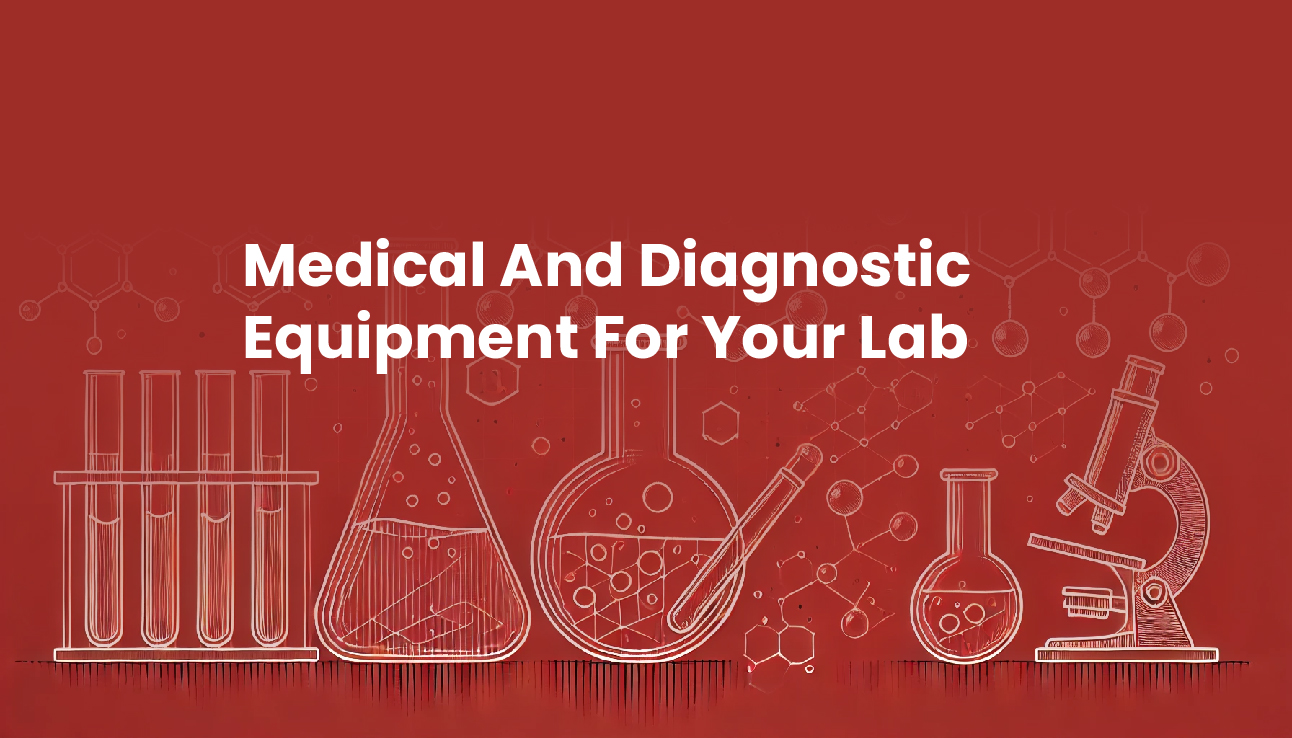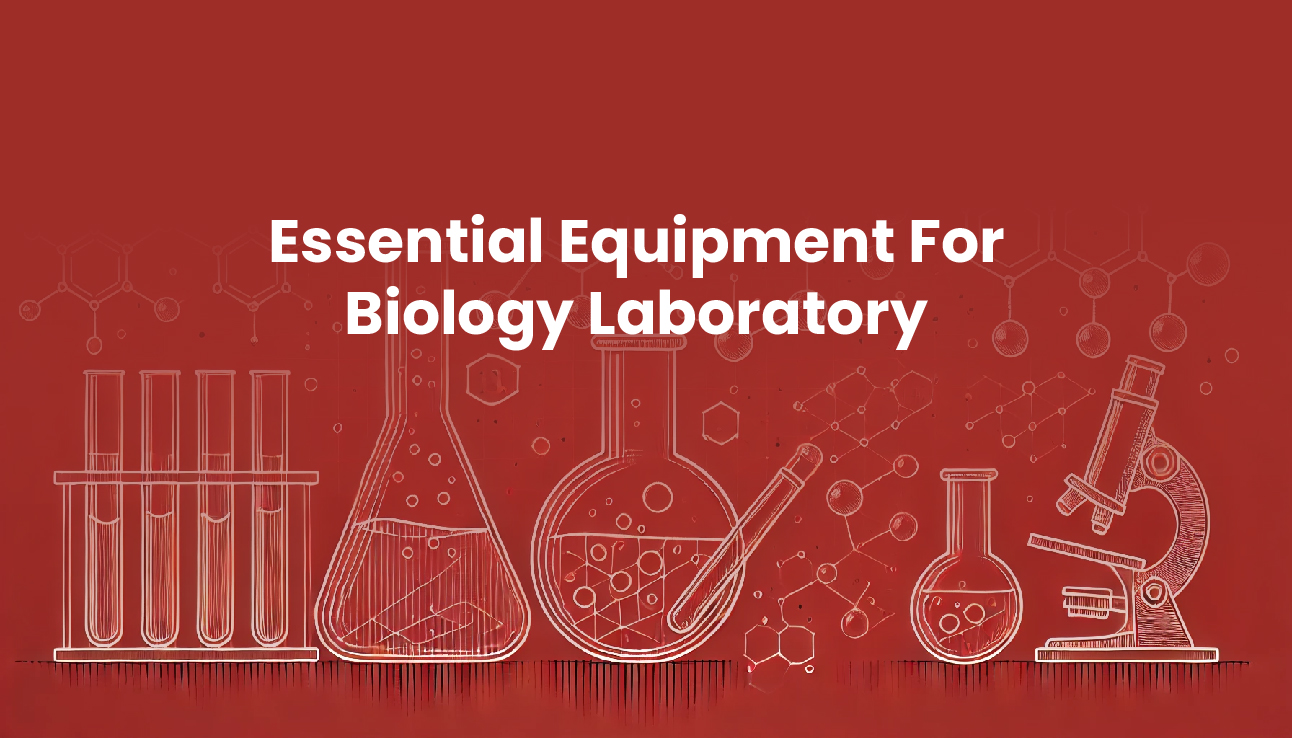A well-equipped chemistry laboratory is the backbone of scientific discovery and innovation. From routine analysis to ground-breaking research, the right equipment is crucial for chemists and students to conduct experiments safely, accurately, and efficiently.
Whether you’re establishing a new laboratory or upgrading an existing one, knowing the essential equipment needed to support various chemical processes is vital.
This article outlines the essential equipment found in a chemistry laboratory, highlighting their functions and importance.
Let’s get started.
Glassware
1. Beaker:
Beakers are cylindrical containers with a spout, used for mixing, heating, and holding liquids. Beakers are essential for general laboratory tasks, such as preparing solutions and conducting reactions.
Beakers come in different sizes, and each size is used for specific purposes. Here’s a rundown of common beaker sizes and their uses:
- Small beakers (50-100 mL):
Used for measuring small volumes of liquids, mixing and heating small samples, and repairing solutions.
- Medium beakers (150-250 mL):
General-purpose beakers for mixing and heating, measuring medium-sized volumes, and titration reactions.
- Large beakers (300-500 mL):
Used for larger-scale mixing and heating, measuring large volumes, and preparing stock solutions.
- Extra-large beakers (1-2 L):
Used for large-scale preparations, measuring large volumes, and heating and mixing bulk samples.
- Giant beakers (5-10 L):
Used for industrial-scale preparations, large-scale mixing and heating, and commercial laboratory settings.
Beakers are made from different materials. Each determines the purpose they will be serving in the laboratory. When selecting a beaker, the material is a crucial consideration. Here are some common materials used for beakers, their properties, and applications:
- Borosilicate Glass (e.g., Pyrex):
Borosilicate beakers are thermal shock resistant, chemical resistant, transparent, non-reactive, and suitable for heating, mixing, and storing corrosive chemicals.
- Soda-Lime Glass:
Soda-lime beakers are less expensive than borosilicate glass, still resistant to chemical corrosion, may not withstand extreme temperature changes, and are suitable for general-purpose laboratory use.
- Polypropylene (PP) or Polyethylene (PE):
Polypropylene beakers are inexpensive, lightweight, resistant to chemicals and corrosion, may deform or melt at high temperatures, and suitable for storing and handling non-corrosive chemicals.
- Stainless Steel:
Stainless steel beakers are durable, resistant to corrosion and scratches, can withstand high temperatures, are non-reactive, and are suitable for heavy-duty laboratory use, mixing, and storing corrosive chemicals.
- Ceramic or Porcelain:
Ceramic or porcelain beakers are non-reactive, resistant to corrosion and scratches, can withstand high temperatures, and are suitable for mixing and storing corrosive chemicals, especially acids.
2. Flask:
Flasks, including Erlenmeyer flasks, round bottom flask, and volumetric flasks, are used for mixing and storing liquids. We have three types of laboratory flasks. They are:
Volumetric Flask:
A volumetric flask is a precision glassware used to prepare solutions with exact concentrations. It has a flat bottom and a narrow neck with a mark indicating the exact volume. Volumetric flasks are calibrated to hold a specific volume at a specific temperature, ensuring accurate measurements. They are commonly used for titration, standardization, and preparation of stock solutions.
Round Bottom Flask:
A round bottom flask is a versatile laboratory vessel used for heating, mixing, and boiling liquids. Its spherical shape allows for efficient swirling and mixing, while the round bottom facilitates easy handling and storage. Round bottom flasks are often used for chemical reactions, distillations, and refluxing. They are typically made of borosilicate glass, making them resistant to thermal shock and chemical corrosion.
Erlenmeyer Flask:
An Erlenmeyer flask, also known as a conical flask, is a laboratory vessel with a conical shape and a narrow neck. It is designed for mixing, heating, and measuring liquids. The conical shape allows for easy swirling and mixing, while the narrow neck reduces evaporation and makes it easy to handle. Erlenmeyer flasks are commonly used for titration, biological cultures, and chemical reactions.
Erlenmeyer flasks come in various sizes, ranging from small volumes for precise measurements to larger volumes for more extensive experiments. Here are some common sizes of Erlenmeyer flasks:
Standard Sizes:
- 25 mL
- 50 mL
- 100 mL
- 250 mL
- 500 mL
- 1 L
- 2 L
Small-Scale Sizes:
- 10 mL
- 15 mL
- 20 mL
Large-Scale Sizes:
- 3 L
- 4 L
- 5 L
- 6 L
Specialty Sizes:
- Micro-Erlenmeyer flasks (1-5 mL)
- Baffled Erlenmeyer flasks (for fermentation and cell culture)
- Vented Erlenmeyer flasks (for gas exchange and pressure relief)
When choosing an Erlenmeyer flask size:
- Consider the volume of liquid needed for the experiment.
- Think about the available storage space.
- Select a size that allows for easy handling and swirling.
- Ensure compatibility with laboratory equipment (e.g., hot plates, stirrers).
3. Test tubes:
Test tubes are small cylindrical tubes used for holding, mixing, or heating small quantities of substances. They are often used in qualitative analysis and for conducting small-scale reactions.
Test tubes come in various sizes and are used for different applications:
Standard Sizes:
- 10 mm x 75 mm (small)
- 13 mm x 100 mm (medium)
- 16 mm x 125 mm (large)
- 20 mm x 150 mm (extra-large)
Specialty Sizes:
- Micro-test tubes (5-10 mm x 50-75 mm)
- Macro-test tubes (25-30 mm x 200-250 mm)
Applications of test tubes:
- Biological Samples
- Chemical Reactions
- Pharmaceutical Research
- Environmental Monitoring
- Educational Institutions
Specialized Test Tubes:
- Centrifuge Tubes
- PCR (Polymerase Chain Reaction)
- Vacuum Blood Collection Tubes
- Cryogenic Tubes
Test tubes rack:
A test tube rack is laboratory equipment used to hold and organize test tubes in a secure and stable position, making it easier to handle, store, and transport them. Here are some key features and types of test tube racks:
Features:
- Multiple tubes capacity
- Adjustable or fixed tube holders
- Durable materials (e.g., plastic, metal, wood)
- Compact design for efficient storage
- Easy cleaning and maintenance
Types:
- Horizontal Racks: Tubes are placed horizontally, ideal for centrifugation and storage.
- Vertical Racks: Tubes are placed vertically, suitable for visibility and accessibility.
- Slanted Racks: Tubes are placed at an angle, convenient for pipetting and handling.
- Modular Racks: Interlocking racks for customized configuration and expanded capacity.
- Portable Racks: Compact, lightweight designs for easy transportation.
Materials:
- Plastic (autoclavable)
- Stainless Steel (resistant to corrosion)
- Aluminum (lightweight)
- Wood (traditional, natural material)
4. Pipette and burette:
Pipettes are used to transfer precise volumes of liquids, while burettes are used for titration, allowing for the controlled addition of a liquid to a reaction. Both are essential for accurate measurements in quantitative analysis.
Heating Equipment
-
Bunsen Burners:
Bunsen burners provide a controlled flame for heating substances. They are commonly used for sterilization, combustion, and heating reactions. Safety features, such as flame control and gas supply, are crucial for their operation.
Types:
- Standard Bunsen burner
- Micro Burner (smaller, more precise flame)
- Infrared Bunsen burner (reduced visible flame)
- Natural gas Bunsen burner
- Portable Bunsen burner
Safety Precautions:
- Use in a well-ventilated area
- Ensure proper gas connection
- Adjust flame height carefully
- Keep away from flammable materials
- Never leave unattended
- Follow laboratory guidelines
Best Practices:
- Regularly inspect and maintain the burner
- Use the correct gas type and pressure
- Adjust the flame for optimal performance
- Keep the work area clean and clear
- Follow proper shutdown procedures
2. Hot Plates:
Hot plates are electric devices used to heat substances without an open flame. They provide a safer alternative for heating liquids and are often used in conjunction with beakers and flasks.
Types:
- Electric Hot Plate
- Ceramic Hot Plate
- Digital Hot Plate
- Magnetic Stirrer Hot Plate
- Hot Plate Stirrer
Applications:
- Heating and mixing chemicals
- Maintaining reaction temperatures
- Distillation and reflux
- Crystallization
- Biological experiments (e.g., culturing microorganisms)
Features:
- Temperature range (up to 500°C)
- Accuracy and precision
- Stirring speed control
- Timers and alarms
- Safety features (e.g., overheat protection, thermal cutoff)
Safety Precautions:
- Use in a well-ventilated area
- Keep away from flammable materials
- Avoid overheating
- Use protective gear (gloves, goggles)
- Follow laboratory guidelines
Best Practices:
- Calibrate the hot plate regularly
- Clean and maintain the heating surface
- Use the correct temperature and stirring settings
- Monitor experiments closely
- Follow proper shutdown procedures
3. Ovens and Drying Equipment:
Laboratory ovens are used for drying glassware and samples, as well as for conducting reactions at elevated temperatures. They provide a controlled environment for consistent results.
Measurement Equipment
-
Balances:
Analytical balances are used to measure the mass of substances with high precision. They are essential for preparing solutions and conducting experiments that require accurate measurements.
An analytical balance is a highly sensitive laboratory instrument used to measure the mass of samples with precision.
Characteristics:
- High sensitivity (0.1-0.01 mg)
- High accuracy (±0.1-0.01 mg)
- Small capacity (up to 100-200 g)
- Electronic or mechanical designs
Types:
- Electronic Analytical Balance
- Mechanical Analytical Balance
- Precision Balance
- Microbalance (for very small samples)
Applications in Chemistry Laboratory:
- Quantitative analysis of samples
- Preparation of standard solutions
- Gravimetric analysis
- Moisture content determination
- Purity determination
Calibration and Maintenance:
- Calibrate regularly using standard weights
- Clean and dust the balance regularly
- Check and adjust the sensitivity
- Verify accuracy with certified weights
Tips and Best Practices:
- Handle samples gently to avoid contamination
- Use the correct weighing technique
- Ensure proper balance leveling
- Minimize air currents and vibrations
- Follow laboratory guidelines and protocols
Common Errors:
- Inaccurate calibration
- Incorrect weighing technique
- Contamination of samples
- Air currents and vibrations
- Insufficient balance maintenance
Troubleshooting:
- Error messages or inconsistent readings
- Inability to calibrate
- Imbalance or instability
- Damage to the weighing pan or balance beam
2. pH Meters:
pH meters are electronic devices used to measure the acidity or alkalinity of a solution. They are crucial for experiments that require specific pH levels and for monitoring chemical reactions.
Types of pH Meters:
- Benchtop pH Meters
- Portable pH Meters
- Handheld pH Meters
- Digital pH Meters
Applications in Chemistry Laboratory:
- Acid-base titrations
- pH monitoring of reactions
- Water quality analysis
- Soil analysis
- Biological sample analysis
Calibration and Maintenance:
- Calibrate the pH meter regularly using buffer solutions.
- Clean and maintain the pH electrode.
- Check and replace the reference electrode as needed.
- Verify the accuracy of the pH meter.
Tips and Best Practices:
- Use the correct pH electrode for the application.
- Ensure proper temperature control.
- Avoid contamination of the electrode.
- Use fresh buffer solutions for calibration.
- Follow laboratory guidelines and protocols.
3. Spectrophotometers:
Spectrophotometers measure the intensity of light absorbed by a sample, allowing for the analysis of concentration and purity. They are widely used in quantitative analysis and research.
Types of Spectrophotometers:
- UV-Visible Spectrophotometer (UV-Vis)
- Infrared Spectrophotometer (IR)
- Nuclear Magnetic Resonance Spectrophotometer (NMR)
- Atomic Absorption Spectrophotometer (AAS)
- Fluorescence Spectrophotometer
Applications in Chemistry Laboratory:
- Quantitative analysis of samples
- Qualitative identification of compounds
- Determination of molecular structure
- Study of chemical reactions and kinetics
- Analysis of biological samples
Advantages:
- Non-destructive analysis
- High sensitivity and accuracy
- Rapid analysis
- Versatility (various sample types)
Limitations:
- Sample preparation required
- Interference from impurities
- Limited dynamic range
- Instrument calibration required
Best Practices:
- Calibrate the instrument regularly.
- Use proper sample preparation techniques.
- Optimize instrument settings.
- Validate results with other methods.
- Follow laboratory guidelines and protocols.
Safety Equipment
1. Fume Hoods:
Fume hoods are ventilated enclosures that protect laboratory personnel from hazardous fumes, vapors, and dust. They are essential for conducting experiments with volatile or toxic substances.
2. Personal Protective Equipment (PPE):
PPE, including lab coats, gloves, goggles, and face shields, is vital for protecting laboratory personnel from chemical exposure and accidents. Proper use of PPE is a fundamental aspect of laboratory safety.
3. Fire Extinguishers and Safety Showers:
Fire extinguishers are necessary for responding to fires, while safety showers and eyewash stations provide immediate decontamination in case of chemical spills or splashes.
Storage and Organization
1. Chemical Storage Cabinets:
Proper storage of chemicals is crucial for safety and organization. Chemical storage cabinets are designed to store hazardous materials securely, preventing leaks and contamination.
2. Refrigerators and Freezers:
Some chemicals require refrigeration to maintain stability. Laboratory refrigerators and freezers are essential for storing sensitive reagents and samples.
3. Labeling and Inventory Systems:
Effective labeling and inventory systems help keep track of chemicals and equipment, ensuring that everything is organized and easily accessible.
Get Your Laboratory Equipment From SimmyFranks
Knowing the equipment you need for your laboratory is one thing and knowing where to get them is another.
If you are looking for a supplier from whom you will get your high-quality laboratory equipment but just can’t pick one out of the endless list due to some uncertainties, look no further than SimmyFranks.
At SimmyFranks, we offer products ranging from laboratory equipment to laboratory furniture. At SimmyFranks we believe that the right equipment brings an accurate and reliable result, for this reason, we make it our mission to deliver equipment from reputable manufacturers to you at competitive prices.
Contact us or visit our shop for a pleasurable shopping experience.
Essential Equipment For Chemistry Laboratory: FAQ
Let’s answer some frequently asked questions on chemistry laboratory equipment
1. What are the basic types of equipment found in a chemistry lab?
Chemistry labs typically contain a variety of equipment, which can be categorized into several types:
- Glassware: This includes beakers, flasks (Erlenmeyer, volumetric), test tubes, and graduated cylinders, which are used for mixing, heating, and measuring liquids.
- Heating Devices: Bunsen burners, hot plates, and heating mantles are used to heat substances.
- Measuring Instruments: Balances for weighing, pH meters for measuring acidity, and spectrophotometers for analyzing light absorption.
- Safety Equipment: Fume hoods, safety goggles, gloves, and lab coats to ensure a safe working environment.
- Support Equipment: Ring stands, clamps, and burettes for holding and controlling the flow of liquids.
2. Why is glassware important in a chemistry lab?
Glassware is essential in a chemistry lab because it is chemically resistant, allowing for the safe handling of various substances. Different types of glassware serve specific purposes:
- Beakers: Used for mixing and heating liquids.
- Flasks: Ideal for reactions that require swirling or boiling.
- Pipettes and Burettes: Used for precise measurement and transfer of liquids.
The transparency of glassware also allows for easy observation of reactions.
3. What safety equipment is necessary in a chemistry lab?
Safety is paramount in any chemistry laboratory. Essential safety equipment includes:
- Fume Hoods**: To ventilate harmful vapors and gasses.
- Safety Goggles: To protect eyes from splashes and harmful chemicals.
- Gloves: To protect hands from corrosive or toxic substances.
- Lab Coats: To protect skin and clothing from spills.
- First Aid Kits: For immediate response to accidents.
4. How do I choose the right balance for my lab?
When selecting a balance, the key factors to consider are:
- Capacity: Choose a balance that can handle





